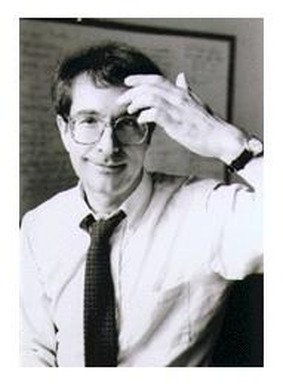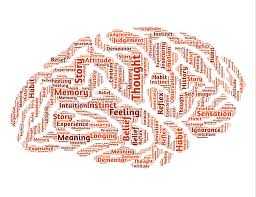
Howard Gardner, in his book The Frames of Mind, Gardner (1993) introduces a new and broader way of conceptualizing intelligence. He defines intelligence as a trait of an individual that translates into skills valuable in our society (Gardner, 1983). Is the intelligence that a comedian (a skill valuable in our society) possesses the same intelligence as a gifted gymnast? What about a counselor or a nature guide? Gardner argues that these careers attract people strong in different types of intelligence. In fact, Gardner identifies eight areas of intelligence that are separate from each other. A person can be advanced in one or more of the following domains of intelligence:
Student Achievement Gains. Why should teachers take the extra time and effort to incorporate multiple intelligence theory into their teaching? When student’s approach new knowledge acquisition from a cognitive area of strength, academic improvements can occur. Additionally, student engagement was found to increase (Akkuzu & Husamettin, 2011). Mindy Kornhaber, who originally worked with Gardner on the multiple intelligence theory, implemented a ten-year research project that looked at the results of multiple intelligence theory when implemented in classrooms. This project has documented successful academic achievements in programs throughout the nation (Kornhaber, 2004).
Thoughts
Intelligence (or ability) plays a major role in how well our students perform academically. Therefore in order for teachers and educational leaders to optimize student ability, it is important to understand the very nature of intelligence. There are multiple types of intelligences and our students can have strength in one or many of these different cognitive domains (Thurstone, 1938; Gardner, 1983). When teachers understand and use multiple intelligence theory in their classrooms, students can achieve higher academic performance.
Gardner, H. (1983). Frames of mind: The theory of multiple intelligences. New York: Basic Books. Kornhaber, M.L. (2004). Multiple intelligences: from the ivory towers to the dusty classroom–but why? Teachers College Record, 106(1), 67-76. http://www.tcrecord.org
Kornhaber, M.L. (2004). Multiple intelligences: from the ivory towers to the dusty classroom–but why? Teachers College Record, 106(1), 67-76. http://www.tcrecord.org
- Linguistic- Individuals can be gifted in written and/or oral language. Examples of this include poets, politicians, writers, and comics.
- Logical-mathematical- Individuals who are good at working with numbers and thinking in a logical fashion are gifted in this area. Examples of this include statisticians, mathematicians, accountants, and engineers.
- Spatial- Individuals who can think visually and who can orient themselves spatially are gifted in this area. Examples include architects, artists, inventors, map-makers, and guides.
- Bodily-kinesthetic- Individuals who have understanding of their physical body and are able to control movements and objects are gifted in this area. Examples include dancers, athletes, sculptors, and doctors.
- Musical-rhythmic- Individuals who are able to understand and interpret the world through music and rhythm are strong in this area. Examples include musicians, singers, and song-writers.
- Interpersonal- Individual who are good at understanding moods, actions, feeling of others are strong in this area. Examples include psychologist and counselors.
- Intrapersonal- Individuals who are highly aware of themselves and their responses and actions are high in this area. Examples include religious leaders and political activist.
- Naturalist (recently added)- Individuals who are strong in this area recognize and see patterns in the plants and animals around them. Examples are biologist, veterinarian, and botanist.
Student Achievement Gains. Why should teachers take the extra time and effort to incorporate multiple intelligence theory into their teaching? When student’s approach new knowledge acquisition from a cognitive area of strength, academic improvements can occur. Additionally, student engagement was found to increase (Akkuzu & Husamettin, 2011). Mindy Kornhaber, who originally worked with Gardner on the multiple intelligence theory, implemented a ten-year research project that looked at the results of multiple intelligence theory when implemented in classrooms. This project has documented successful academic achievements in programs throughout the nation (Kornhaber, 2004).
Thoughts
Intelligence (or ability) plays a major role in how well our students perform academically. Therefore in order for teachers and educational leaders to optimize student ability, it is important to understand the very nature of intelligence. There are multiple types of intelligences and our students can have strength in one or many of these different cognitive domains (Thurstone, 1938; Gardner, 1983). When teachers understand and use multiple intelligence theory in their classrooms, students can achieve higher academic performance.
Gardner, H. (1983). Frames of mind: The theory of multiple intelligences. New York: Basic Books. Kornhaber, M.L. (2004). Multiple intelligences: from the ivory towers to the dusty classroom–but why? Teachers College Record, 106(1), 67-76. http://www.tcrecord.org
Kornhaber, M.L. (2004). Multiple intelligences: from the ivory towers to the dusty classroom–but why? Teachers College Record, 106(1), 67-76. http://www.tcrecord.org
Multiple Intelligence Questionare
There are a lot of MI surveys. Some are better than others and some are free while others are paid services. This site is sponsored by Literacyworks, a non-profit organization. The survey is free and the results are easy to interpret. The survey doesn't take long to complete and is 56 questions. Find out what your cognitive strengths are.

